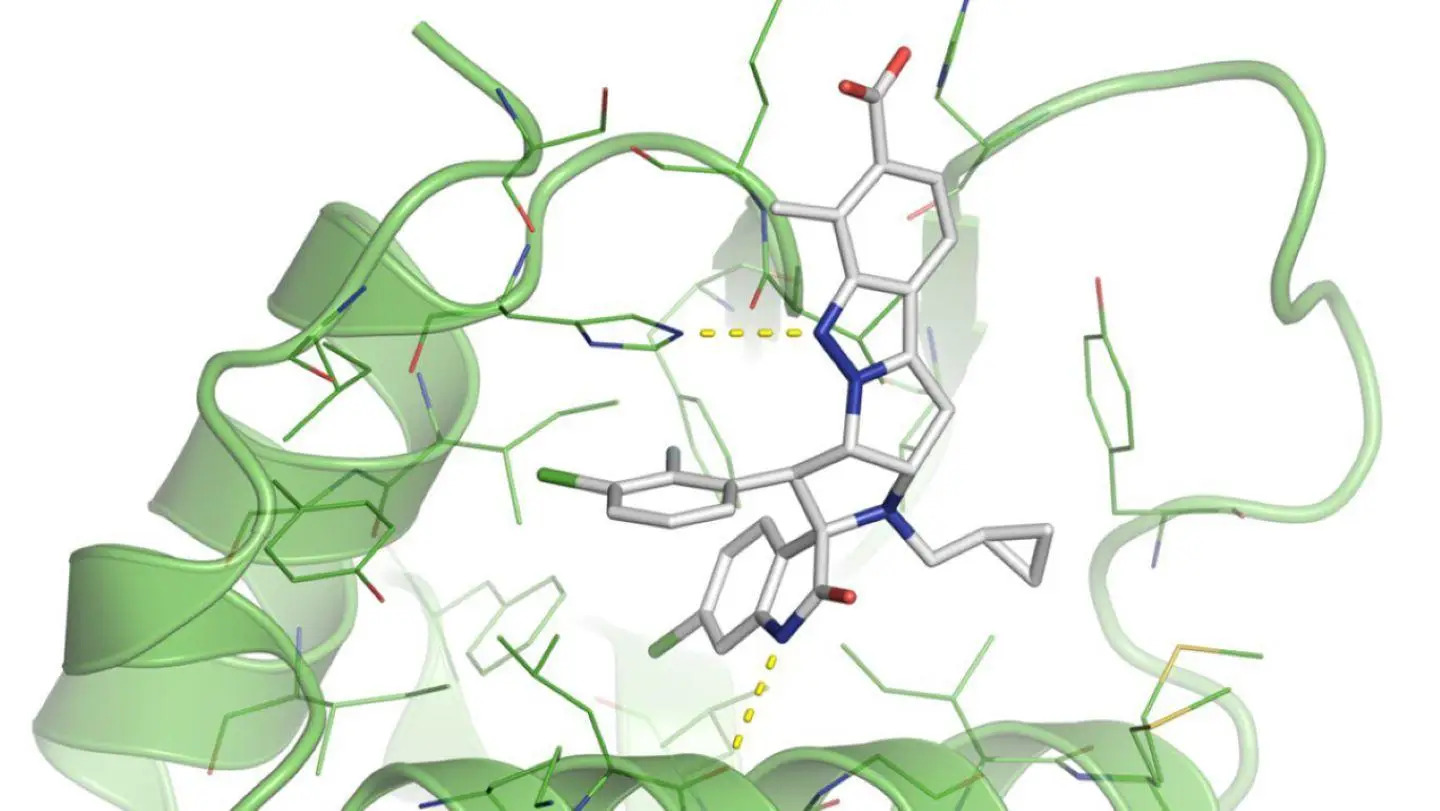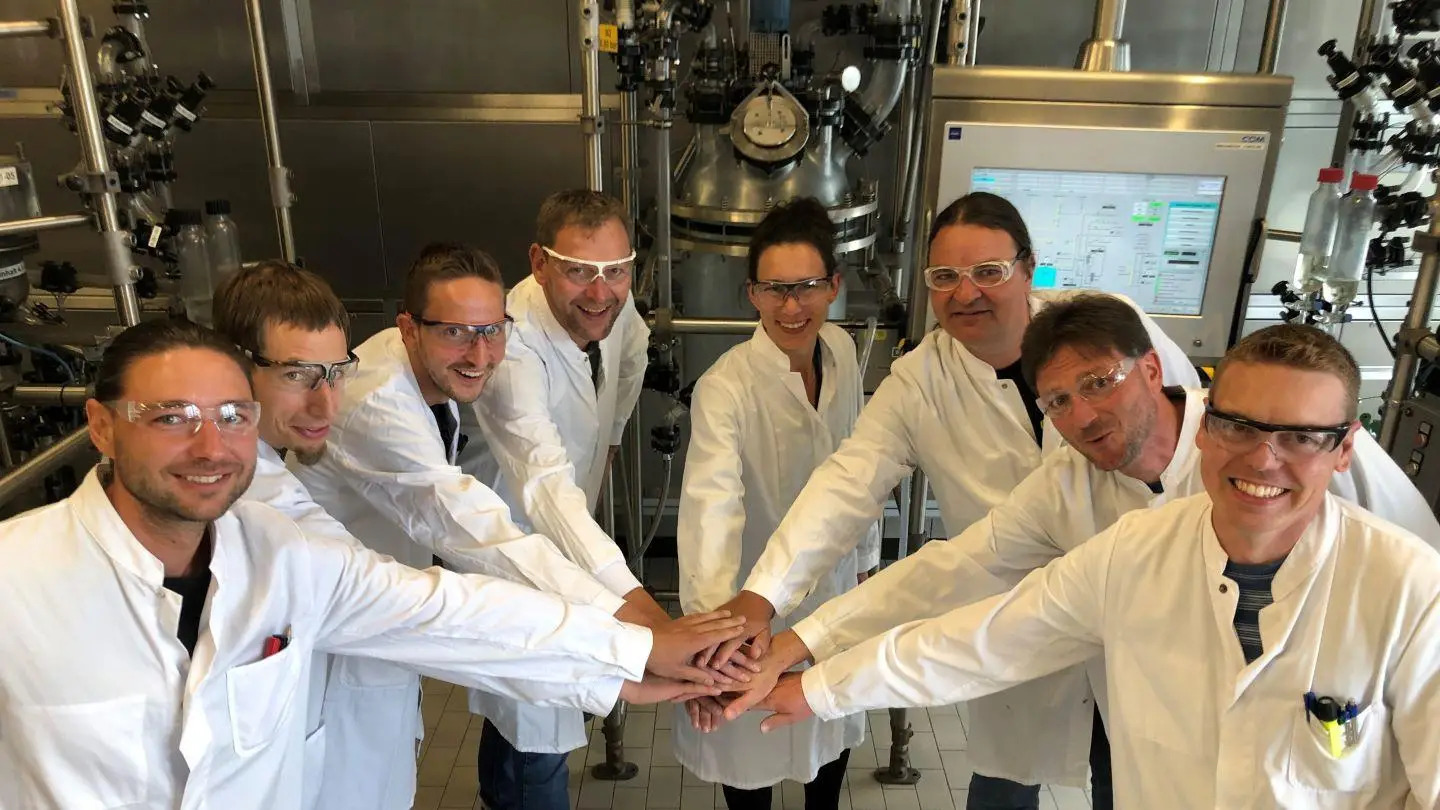Investigating MDM2-p53 in cancer: the story of Brigimadlin
Inactivation of the tumor suppressor protein p53 is a central mechanism by which cancer cells drive tumor growth. Increased levels of the protein MDM2, a key negative regulator of p53, is a well characterized inactivation mechanism, seen in about 5%-7% of all cancer cases. Over a decade ago, we set out to discover a novel small molecule that blocks the MDM2-p53 interaction. Brigimadlin (BI 907828) is now our most advanced oncology asset in development being clinically investigated in people with dedifferentiated liposarcoma (DDLPS) — a rare cancer with high unmet patient needs.
Soft-tissue sarcomas (STS) are a group of rare and heterogeneous tumors arising in the soft tissues of the body such as muscle, nerves, blood vessels and fatty and fibrous tissues. There are more than 100 different histologic subtypes of all STS, with different patterns of clinical behavior.1 DDLPS is an aggressive subtype of STS and one of the least responsive to chemotherapy. The standard of care for people living with DDLPS has not changed significantly in the past 45 years.2
The U.S. Food and Drug Administration provided Fast Track Designation for the investigation of brigimadlin in DDLPS. This asset is currently in two Phase III clinical trials including, Brightline-1 (ClinicalTrials.gov identifier: NCT05218499) and Brightline-4 (ClinicalTrials.gov identifier: NCT06058793). Additionally, this asset is in a Phase IIa/IIb clinical trial, Brightline-2 (ClinicalTrials.gov identifier: NCT05512377) for the treatment of advanced or metastatic MDM2-amplified TP53 wild-type biliary tract and pancreatic cancers as well as other select solid tumor types.
MDM2 and p53 in cancer
p53 is commonly referred to as the “Guardian of the Genome” due to its key role in protecting DNA integrity of cells. In normal cellular conditions, p53 is kept at low levels by the binding of its negative regulator MDM2 (murine double minute 2), which promotes p53 degradation. If a cell is exposed to stress, such as DNA damage, p53 jumps into action to control DNA repair or induce cell death (if damage cannot be repaired).3
Cancer cells have developed strategies to inactivate p53’s tumor suppressor function. One mechanism is via mutations in the p53 gene — this represents approximately 50% of all cancers, making p53 the most frequently mutated gene in cancer.4 In p53 wild-type, a strategy is through increasing MDM2 levels. MDM2 amplifications (an increase in the copy number of the MDM2 gene) are most prevalent in sarcomas and occur in nearly all DDLPS cases.5 These amplifications lead to increased levels of the MDM2 protein consequently, depleting p53. Therefore, blocking the MDM2-p53 interaction is considered a promising therapeutic strategy to restore wild-type (non-mutated) p53 function and induce death of cancer cells.
Breaking through the walls of drug design and chemical development
Proteins play a key role in several biological processes. They catalyze reactions, transport molecules, but also control cell death as with p53. Many of these activities are regulated through protein-protein interactions — physical contacts between two or more protein molecules. This describes the interaction between MDM2 and p53.
Targeting protein-protein interactions with small molecule inhibitors is conventionally considered highly challenging. The strong binding constant and the large binding interface between protein molecules can be hard to overcome with a small molecule.6 Thus, to address the MDM2-p53 interaction, we needed to design a PPI inhibitor that binds to the large p53-binding pocket of MDM2 and, in doing so, displaces the tightly binding p53. What makes targeting MDM2 particularly challenging is that when a drug binds to MDM2, a feedback loop causes the expression of MDM2 to increase, quickly neutralizing the drug’s effectiveness.
But these were not the only challenges that our scientists had to face. Literature suggested that inhibition of the MDM2-p53 interaction impaired the development of neutrophils and platelets that are essential cells in the blood, leading to serious conditions called neutropenia and thrombocytopenia.7

Norbert Kraut, Global Head of Cancer Research at Boehringer Ingelheim, recalls, “A few years after we started the project, I had the opportunity to present our research pipeline to an advisory board of clinical investigators. When I presented this program and our goal to deliver a potentially potent compound for infrequent dosing in the clinic, there was a lot of excitement in the room! This was our first protein-protein interaction target in oncology. We had a lot to learn. But we were quite bold, courageous and had a steep learning curve throughout the entire phase of drug discovery.”
Rigidification as key to success
In medicinal chemistry and drug design, rigidification is the process of reducing the flexibility of a molecule. By using rigidification as a guiding design principle and after considerable effort to optimize the molecule, we were able to create a highly rigidified and selective compound with pharmacokinetic properties that met our dosing requirements. In 2016, the oral compound BI 907828 (now known as brigimadlin), started preclinical development.
The rigid structure of our MDM2-p53 antagonist can be recognized by its large, fused ring system: note below the high number of rings in close proximity.

Mastering Complexity: The art of producing brigimadlin at scale
Our scientists in chemical development encountered challenges. The teams had only a matter of months to develop and optimize a new synthetic route to produce kilogram quantities of the highly complex structure of our investigational assets.
Annika Gille, Principal Scientist in Chemical Development at Boehringer Ingelheim, had just started her postdoc at our site in Biberach, Germany, when she was offered a position as Lab Head to run this ambitious project. “It was a great opportunity and learning experience. We had a combination of all possible challenges for process development in this project. But we took the time and dedicated the resources to fully figure out the chemistry. This was only possible through amazing teamwork and support from our management. We worked early on and closely across our internal groups, departments and R&D sites, which required seamless coordination and planning. For example, to achieve the tight timelines, while one team was optimizing the synthesis, other teams were already working in parallel to optimize the process to scale up for manufacturing, and search for better alternatives for the next manufacturing demands.”

“This was from the start an interesting precision medicine concept in oncology. We had several medicinal chemistry challenges — it has always been a challenge to address the protein-protein interaction. But our perseverance, passion for science and commitment to patients gave us the courage to pursue this journey ahead. This is the first of multiple exciting assets in our oncology pipeline that will potentially deliver meaningful advances for people living with cancer,” adds Norbert Kraut.
Together we can change lives
Our purpose is to transform lives for generations. Our curiosity, creativity and passion for science lead us to take the paths scientifically less travelled and the courage to face challenging journeys as we relentlessly pursue the next generation of breakthrough therapies. This is only possible with the support of our exceptional people and global family of partners, who share the same passion for science and enjoy working together to deliver breakthroughs.
This compound is an investigational agent and has not been approved for use by any regulatory authority, including the U.S. Food and Drug Administration (FDA). The efficacy and safety of this investigational compound has not been established.
References
Gamboa AC, Gronchi A, Cardona K. CA Cancer J Clin. 2020;70(3):200-229.
Schöffski, P. Established and experimental systemic treatment options for advanced liposarcoma. Oncol. Res. Treat. (2022) doi:10.1159/000524939.
Zhao, Y., Yu, H. & Hu, W. The regulation of MDM2 oncogene and its impact on human cancers. Acta Biochim. Biophys. Sin. (Shanghai). 46, 180–189 (2014).
Chen, X. et al. Mutant p53 in cancer: from molecular mechanism to therapeutic modulation. Cell Death Dis. 13, 974 (2022).
Momand, J., Jung, D., Wilczynski, S. & Niland, J. The MDM2 gene amplification database . Nucleic Acids Res. 26, 3453–3459 (1998).
Lu, H. et al. Recent advances in the development of protein–protein interactions modulators: mechanisms and clinical trials. Signal Transduct. Target. Ther.5, (2020).
Iancu-Rubin, C. et al. Activation of p53 by the MDM2 inhibitor RG7112 impairs thrombopoiesis. Exp. Hematol. 42, 137-145.e5 (2014).

